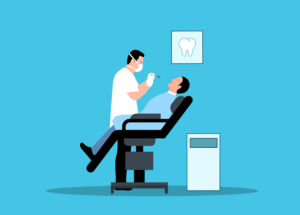Does OHIP Cover Breast Reduction Procedures?
By Krista DeKuyper | August 15, 2024 |

Breast reduction surgery, medically known as reduction mammoplasty, is a procedure that many women consider to alleviate physical discomfort, improve body image, and enhance quality of life. However, navigating the intricacies of health insurance coverage for such procedures can often feel overwhelming, particularly when it comes to understanding the role of the Ontario Health Insurance Plan (OHIP). Breast reduction surgery is seen as essential for many, but do the provincial public health coverage guidelines agree? Can OHIP cover breast reduction procedures? In this comprehensive guide, we will explore how OHIP operates, the criteria for coverage, the significance of medical necessity, and the application process, while also addressing potential alternatives if coverage is not approved.
How Does OHIP Coverage Work?
The Ontario Health Insurance Plan (OHIP) provides essential medical services to residents of Ontario, Canada. Funded by provincial taxes, it ensures that eligible individuals receive coverage for necessary healthcare services, including hospital visits, doctor consultations, and surgical procedures. However, it is important to note that not all services are covered under OHIP.
For services to be covered, they generally must be deemed medically necessary. OHIP focuses on essential healthcare, excluding many elective or cosmetic procedures. Understanding how OHIP determines the appropriateness of coverage is crucial when seeking funding for specific surgical interventions, like breast reduction.

Criteria for Coverage of Breast Reduction Procedures
Yes, OHIP can cover breast reduction procedures, but only if certain criteria are met and proven to be true. Typically, these include:
- Severe Physical Discomfort: Patients need to demonstrate that they experience persistent pain and discomfort related to the size of their breasts, which might affect daily activities.
- Proven Medical Conditions: Common medical issues associated with large breasts include chronic neck and back pain, skin irritations, and shoulder indentations caused by bra straps. Documentation from healthcare providers supporting these conditions is often required.
- Psychological Distress: Patients may also need to show that the size of their breasts significantly affects their mental wellbeing and body image, contributing to psychological issues.
Each patient’s situation is unique, and physicians will assess individual circumstances during the evaluation process.
Medical Necessity vs. Cosmetic Surgery
Understanding the distinction between medical necessity and cosmetic surgery is essential regarding OHIP coverage for breast reduction procedures. Medical necessity occurs when a procedure is required to treat a medical condition, while cosmetic surgery is performed purely for aesthetic reasons without addressing a physical health issue.
OHIP primarily covers procedures deemed medically necessary. For breast reduction to qualify for coverage, patients must articulate how their condition is more than just cosmetic. This may involve providing evidence of related health issues. A clear differentiation between medical necessity and cosmetic preferences can make a significant difference in the approval process.
Those who seek a breast reduction specifically for cosmetic purposes will be unable to get coverage from OHIP. Cosmetic purposes can be a reduction to achieve more ideal body proportions, or to make the breasts more symmetrical by reducing one breast but not the other. These are valid reasons to want a breast reduction, but they are not medically necessary.
The Application Process for OHIP Coverage
Seeking OHIP coverage for breast reduction surgery involves a structured application process that begins with a consultation with a qualified healthcare provider, typically a plastic surgeon or a family physician. Here are the general steps in the process:
- Consultation: Schedule an appointment to discuss your concerns and determine whether breast reduction is appropriate.
- Assessment: The healthcare provider will conduct a thorough assessment, reviewing your medical history and any accompanying conditions that justify the need for surgery.
- Referral: If the provider deems the surgery necessary, they will refer you to a specialist equipped to perform the procedure.
- Documents Submission: Following the referral, your specialist will help compile and submit required documents to OHIP for review and approval.
Required Documentation for Approval
To ensure a successful application for coverage, specific documentation is necessary. Essential elements typically include:
- Medical History Reports: Detailed information about your health history, including any ongoing conditions related to breast size.
- Physician Letters: Supporting letters from your primary care physician and referring specialists outlining the medical necessity of the procedure.
- Photographs: Before any surgical intervention, your surgeon may take photographs to document your condition.
- Patient Testimonials: Personal statements describing how breast size affects physical comfort and emotional wellbeing may be beneficial.
All documents must provide clear evidence supporting the reasons for requesting the procedure to improve the chances of OHIP approval. The more evidence you can provide, the better.

Common Reasons for OHIP Coverage Denial
Despite proper documentation, some applications for breast reduction coverage may be denied. Common reasons for such denials can include:
- Insufficient Evidence: If the medical documentation fails to sufficiently demonstrate the physical or psychological distress caused by breast size, OHIP may reject the claim.
- Inability to Establish Medical Necessity: If the application does not adequately show that the procedure is medically necessary, rather than cosmetic, coverage could be denied.
- Incomplete Documentation: Failure to include all required documents may lead to delays or outright denials.
Understanding these potential pitfalls can help applicants reinforce their applications and minimize the risk of denial. If you are denied, you will be able to apply again, but there’s no guaranteeing that reapplying will result in approval.
Alternatives If OHIP Coverage Is Not Approved
If OHIP denies coverage for breast reduction surgery, there are alternatives to consider:
- Private Health Insurance: If you have supplemental private health insurance, review your policy to determine if it covers breast reduction procedures. Some private plans may have different requirements than OHIP.
- Payment Plans: Many surgical clinics offer financing options or payment plans that allow patients to manage out-of-pocket costs in a financially viable way.
- Alternative Funding Sources: Look into charities, grant programs, or community organizations that may offer assistance for medical procedures.
- Reapplication: If your initial application is denied, consider addressing the deficiencies and reapplying after obtaining additional documentation or waiting for improvements in health conditions.
Costs Associated with Breast Reduction Surgery
There’s no guarantee that your breast reduction surgery, if approved, will be fully covered by OHIP. The cost of breast reduction surgery can vary significantly based on several factors, including:
- Surgeon Fees: Experience, credentials, and practice locations can affect the total cost attributed to the surgeon’s fee.
- Facility Fees: Surgical procedures conducted in a private clinic might carry different costs than those in a hospital setting.
- Anesthesia Costs: Additional expenses related to anesthesia can increase the total cost of the procedure.
- Post-operative Care: Follow-up appointments and any required medication can further contribute to the overall expense.
Understanding these costs is essential for financial planning and preparing for potential out-of-pocket expenses.
Support from Healthcare Providers
Navigating the process of obtaining coverage for breast reduction procedures can often feel overwhelming, but healthcare providers play a critical role in offering support. Here’s how:
- Guidance: Healthcare professionals can help you understand the criteria for coverage and what documentation is necessary.
- Advocacy: Your providers can act as advocates, preparing compelling documentation and supporting letters aimed at justifying the medical necessity.
- Post-operative Support: After surgery, ongoing care and support can enhance recovery, addressing any concerns or complications that may arise.
Building a strong relationship with your healthcare providers can ease the journey and improve successful outcomes.
Conclusion
In summary, while the Ontario Health Insurance Plan does have provisions for covering breast reduction procedures, obtaining that coverage requires a thorough understanding of the criteria and processes involved. By clearly demonstrating medical necessity through extensive documentation, bridging the divide between cosmetic and essential surgery, and proactively engaging with healthcare providers, you increase your chances of approval. In cases where coverage is denied, exploring alternative options and financing solutions can help you achieve the results you desire. With careful research and proper preparation, you can navigate the complexities of OHIP coverage for breast reduction procedures effectively.
Interested in going the private insurance route? Some private insurance policies will cover breast reduction surgery, and may be more likely to approve the procedure than OHIP. Use our Quick Quotes to compare private insurance plans and explore the options that are fit for your needs.






























